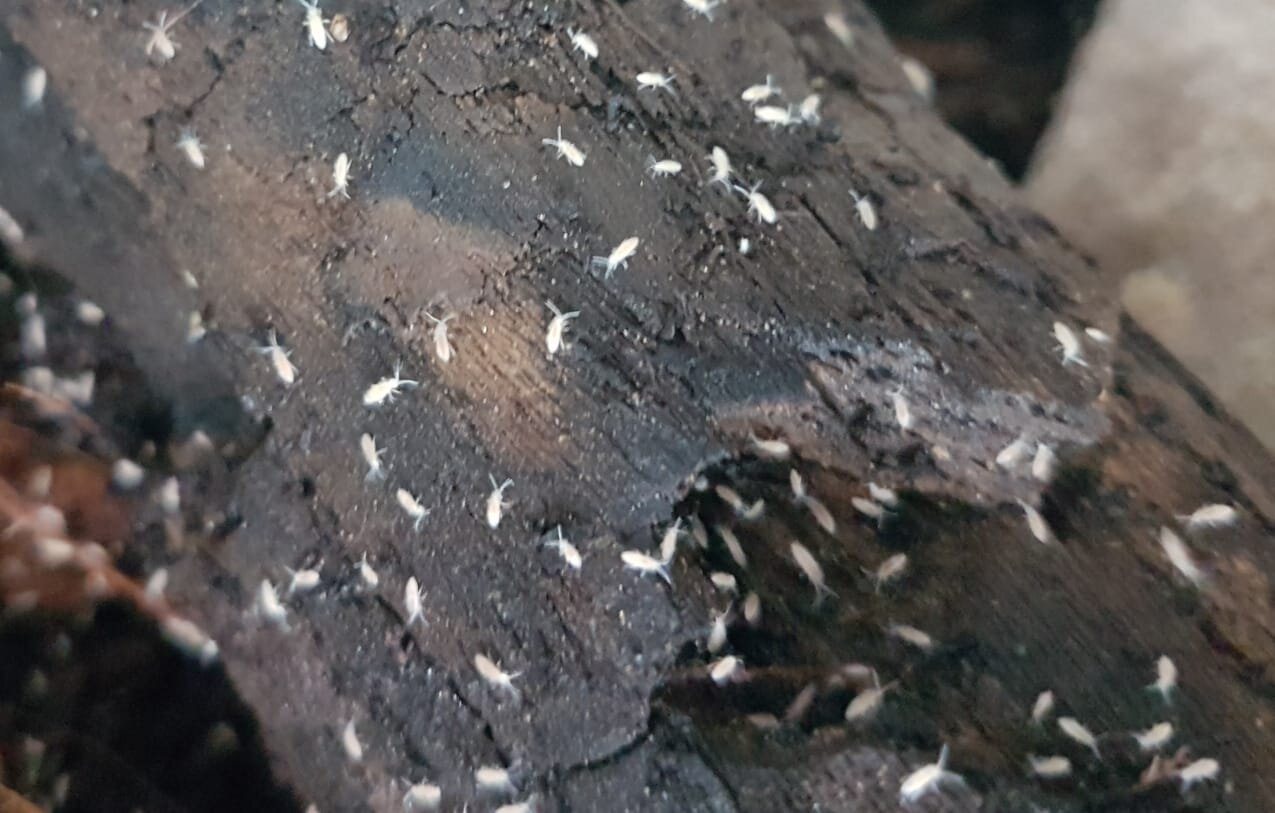How to: Keep Springtails Happy & Increase Reproduction
Springtails are relatively easy to take care of, and are a very successful species found in almost any climate. But when we take them out of a natural environment and attempt to breed them for use, we need to make sure we take care of them appropriately. In this post, we’ll go through our most important factors that aid in springtail reproduction so you can make sure you always have enough for your next project.
Food
Springtails are the natural cleaners of the world and will eat almost anything including the substrate you keep them in, but the usual path to feeding a springtail is to encourage mould.
As the possibilities of food are so broad, there are many different foods you will hear about when looking into springtails. But some foods are better purposed than others in cost effectiveness and practicality. For all of our springtails at Microgreening, we use nutritional yeast as it decomposes very fast, leaves minimal waste as its consumed quickly and can be sourced easily.
A springtail will operate best off of frequent feedings, so less food at a higher rate is preferred. If a springtail enclosure is overfed, the tub may turn unsightly with mould and get out of control if mold is able to mature. When food supply is low, you will notice that springtails get more adventurous and crawl along the lid of your tub trying to find its next meal.
We find that more carbohydrate based foods are slower releasing and provide food over a longer period of time, but also increase the chance of mites introducing themselves.
Humidity & Temperature
Springtails require moisture to live, and they thrive in wet, enclosed containers. As springtails lose moisture through their bodies, you will need to make sure their environment is nice and humid or they may attempt to escape their home in a last effort to find moisture or die from dehydration. Also, when trying to gauge how many springtails you have, make sure humidity is high or else you may find that they are all hiding low in your culture to look for more moisture.
Another reason why humidity is so necessary when having springtails is the fact that the food you feed them will need to decompose, a dry rice grain does not mould easily in a cool, dry space.
Higher temperatures and high humidity will increase the reproduction rate of your springtails, with their optimal breeding temperature sitting between 18 - 30 degrees celcius. Be careful not to attempt to raise the temperature by sunlight as a hot day can literally steam your springtails to death.
No Intruders
When operating a culture for a long period of time, the likelihood of having issues with springtails will lessen after you have the basics understood. This means that the only threat to your culture is now something foreign to the culture. It is very easy to accidentally contaminate your culture with bugs that will fight your springtails for food and attempt to overthrow your culture. Certain species of springtails will actually eat nematodes and other invertebrates when food is scarce. I know personally we had nematodes and springtails living in a large culture in harmony until we reduced the food to nothing, the springtail population exploded and the nematodes were never to be seen again.
If you notice an infestation in your springtail culture, keep your eye on the situation and see if the situation improves. If the situation drastically goes the wrong way you may have predatory mites, which means your culture will have to be carefully swapped to a fresher tank using very intricate measures or start over.
As in another article, we talk about that all springtails are not the same, they only belong to the same family of collembola, and you will need some time to understand exactly what type you have. Factors may include its ability to jump, if it can be predatory, if it is easily overpowered by other bugs and other characteristics. Personally we breed a certain springtail in the Entomobryidae family, which is at times a predatory springtail which can increase population on certain infestations.



